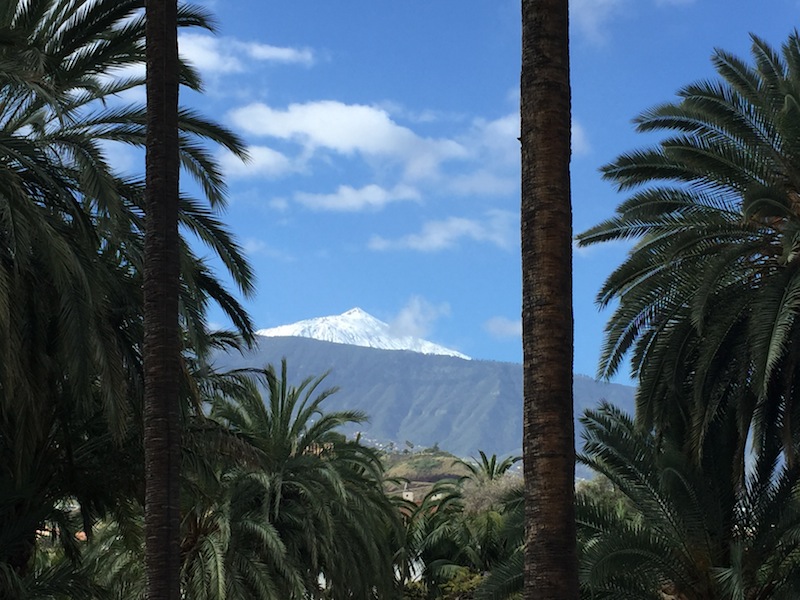We’re no strangers to the Canaries. They’re the default, value-for-money option when it comes to escaping the drab, damp days of winter in London. We’d plumped this time for the northern resort town of Puerto de la Cruz in Tenerife rather than Gran Canaria. It was my first time on the island, Graham’s second.
The draw for me wasn’t just the mild weather, there was also volcanic Mount Teide to explore. And as we flew over the island on our BA A320 (Club Europe of course for such a tedious short haul trip), I could see it’s all conquering slopes covered in snow.
Tenerife Sur Airport was somewhat less attractive, heaving with Saturday arrivals and departures. We hadn’t even collected our bags or our dinky Citroen C1 hire car before witnessing a punch-up involving drunk British blokes, and I breathed a sigh of relief that we were going nowhere near the sin-city development of Playa de las Americas during our stay.
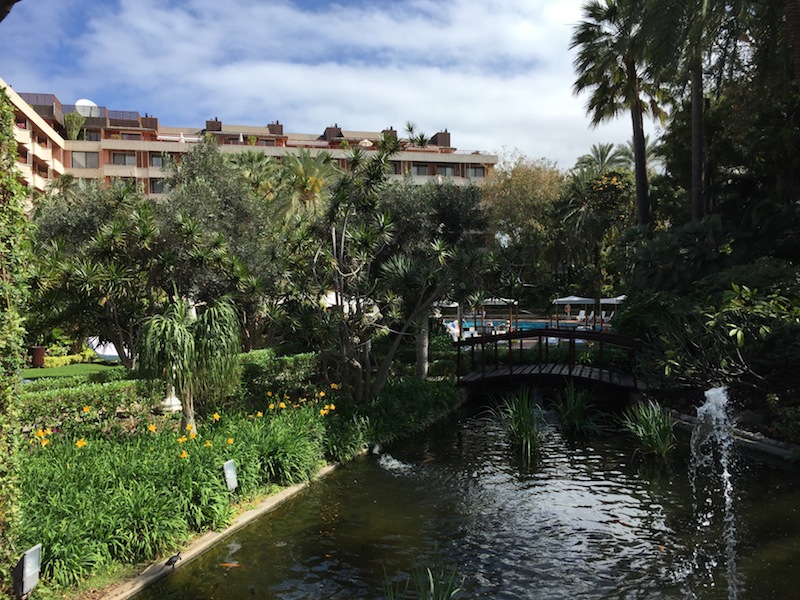
We drove north on the motorway. Like Gran Canaria, there are parts of Tenerife that aren’t that attractive – vast acres given over to polytunnels, scrappy industrial estates and plain towns and villages. But the hills and mountains are epic and jagged, volcanic but green, scarred by ravines. A few wind turbines broke up the view and the rain started to fall as the sun set.
Our base for the week was the 5-star Hotel Botanico, surely one of the best hotels on the island. A 60s-style building, with lush grounds, a spa and plenty of space, the staff were – on the whole – brilliant and masters of excellent customer service.

The bar was spacious and luxurious, and busy and noisy courtesy of a dodgy band. An older and very drunk Birmingham guy regaled us with woeful tales of his love life – or lack of it – and slagged off the hotel’s restaurants.
On our first morning, after a plentiful breakfast, the sun shone briefly, the clouds lifted and we could see the snowy peak of Teide beyond the nearby hills. We explored the beautiful hotel grounds, full of lush planting, ponds, excitable fish and black swans. The sun didn’t last so we went off to the nearby town of La Oratava and later relaxed in the hotel spa, enjoying the steam and jacuzzi, ice room and sauna.
Puerto de la Cruz is, like so much of Tenerife, very hilly and during our visit was rammed with pensioners, quite a few of whom had taken to electric buggies to cope with the slopes. The hotel was full of oldies too. The hills meant it was OK walking into town, but we invariably got a cab back at night when we were weighed down with cheap booze and good food.
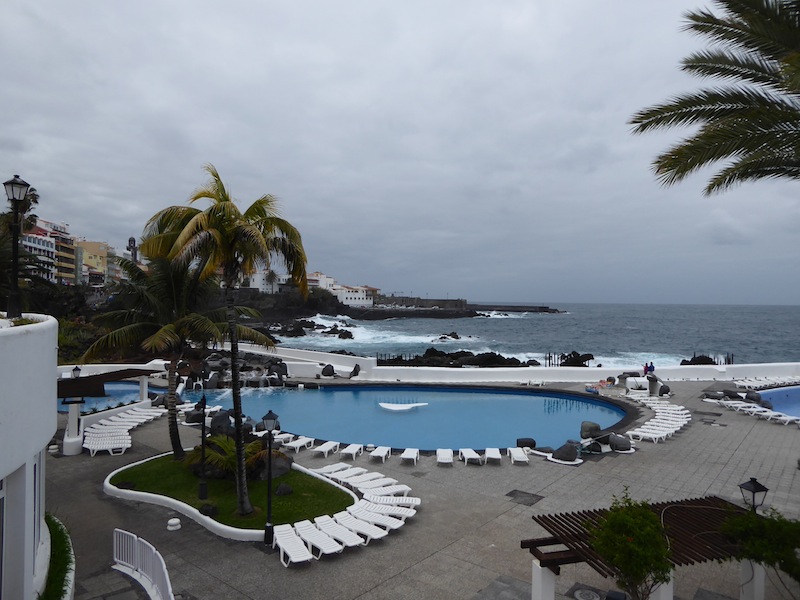
The town has lots of modern buildings, plenty of big hotels, a few tower blocks and the hideous Martianez shopping complex. It’s not particularly attractive but neither is it ugly. On the windy, cloudy days, giant rollers crashed in from the Atlantic onto the black sandy beaches and rocks, and just a few surfers braved the conditions. The black of the coastline was reflected in many of the town’s buildings, which featured Tenerife’s trademark volcanic basalt in varying degrees in their construction.
Tacky bars, tacky tourist shops and average international restaurants dominated the streets of the modern town, and Tenerife traders seemed as keen on retina-burning lighting in their perfumeries and electronics shops as their counterparts in Gran Canaria. However, the seafront on this side of town was at least saved by the Lago Martianez, an attractive outdoor pool complex designed by Canary Island artist and architect Cesar Manrique. It was too chilly and windy to put it through its paces.
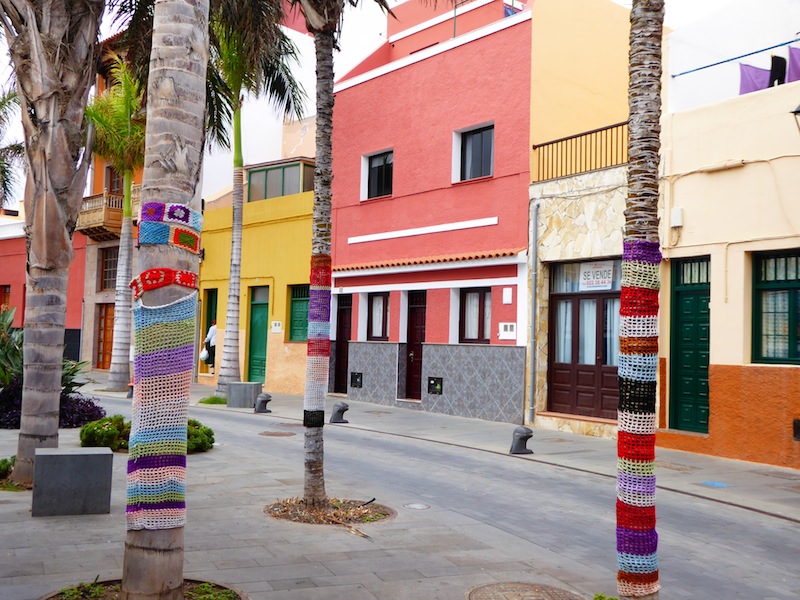
The western side of the town is much more interesting, out beyond the old harbour and the Plaza de Europa. There we found some handsome and historic mansions as well as more humble single-storey dwellings, which no doubt would’ve been home for fishermen and labourers in years past. Little chapels punctuated the rows of cottages, testament to the deep Catholicism of the locals, and something of a contrast to the more bombastic church in the popular and civic Plaza de la Iglesia.
One night we stopped at El Patio del Puerto de la Cruz, a charming restaurant in Plaza Benito Perez Galdoz – a modest, palm-shaded square in the heart of the historic district. A cut above the normal tourist restaurants it was too and I dined on excellent sea bass with mushroom risotto while Graham feasted on a plate of pork.
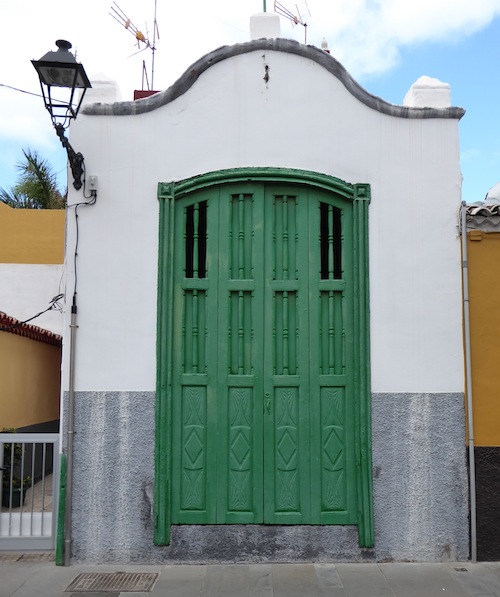
The other excellent restaurants we tried during the week were Tasca el Olivio on Calle de Iriarte, where the tapas was superior to the usual tourist fare and the service super friendly, and Casa Mika – tucked away in the narrow alley of Calle de la Verdad. There was tapas there too but we focused on the small selection of main meals and my rabbit dish was very good.
Plaza del Charco is the Leicester Square of the town, which is not meant as a compliment. Touts tried to tempt us into their bars and restaurants but they were all distinctly average. At night the square and the streets around were full of chavs in awful tracksuits and pensioners in their buggies, as well as a few Spanish families.
We often found ourselves in the harbour-side La Frigata bar, close to a few historic buildings sprouting typical Canarian wooden balconies – survivors amid the hotels and apartment blocks. We enjoyed the drinks and people watched.
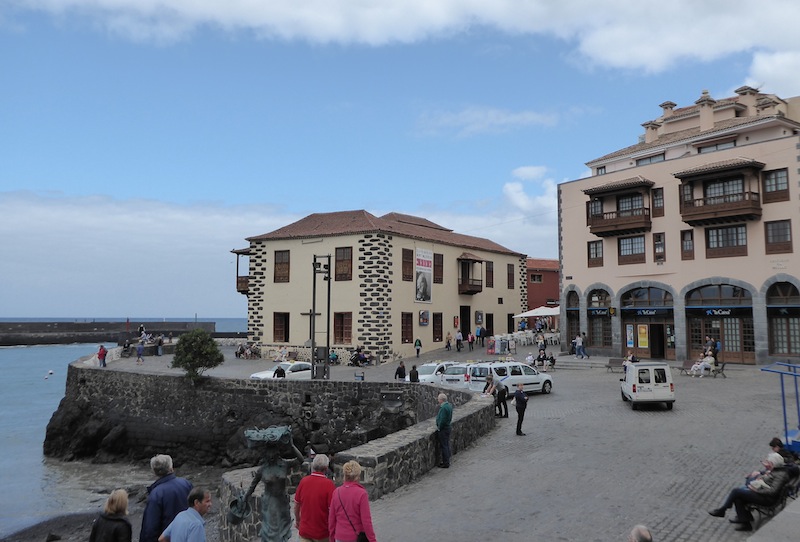
We couldn’t miss ads for Loro Parque, the zoo and theme park that’s one of Tenerife’s main attractions and which, horrifically, keeps killer whales captive despite overwhelming evidence of the suffering this causes. We went nowhere near it but at times it seemed that the whole town was given over to advertising the place and its related theme parks. Sadly, we discovered that our hotel is part of the same group.
Much more of interest to us were the town’s green spaces, including the excellent botanic gardens. Beyond, we explored the historic town of La Laguna and, of course, Mount Teide.
We’d gone to the island with the aim of having a lazy week of lounging by the pool but things didn’t quite turn out as planned. The weather meant we saw more of Tenerife than we’d expected, which is no bad thing, and we only managed a couple of days in the sun, reading, lunching in the hotel’s poolside bar and admiring the good looks of the pool boy. Things could be worse…

